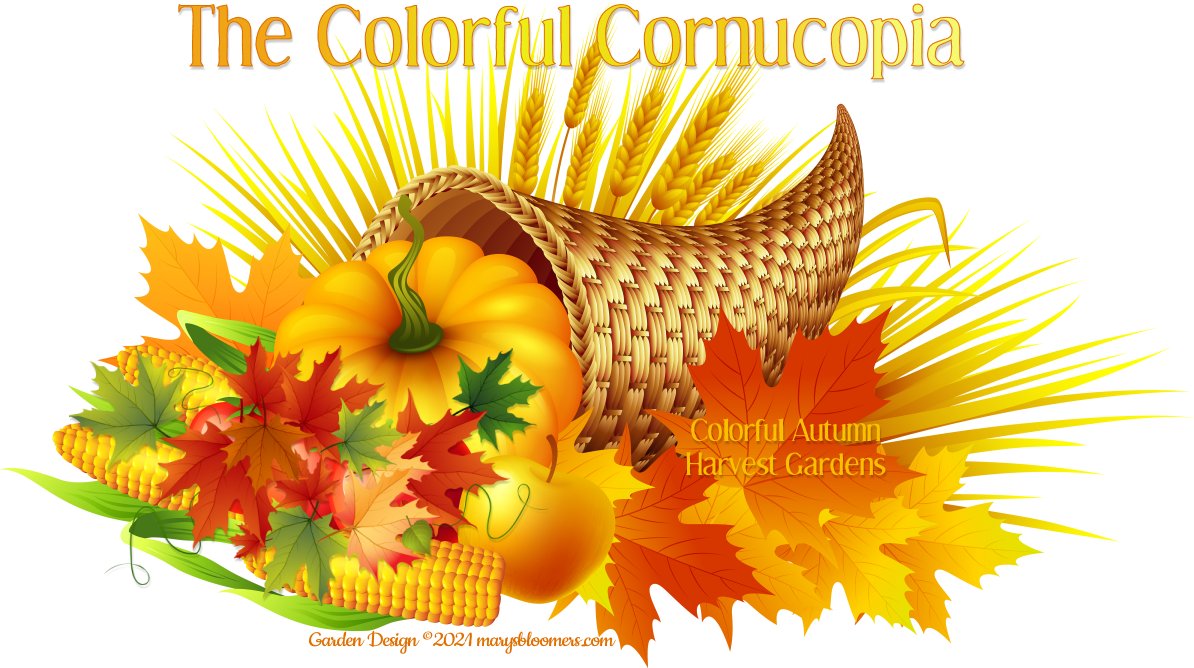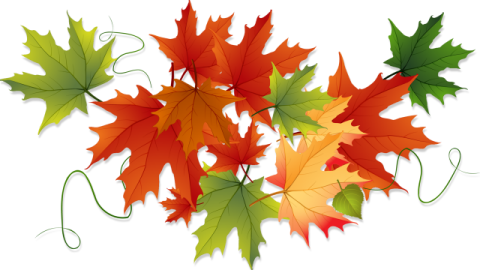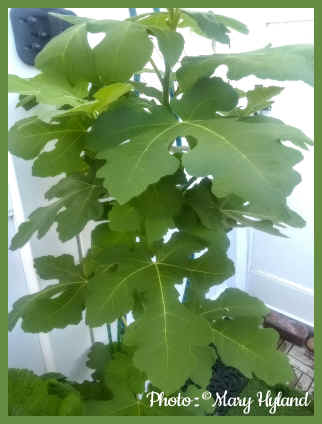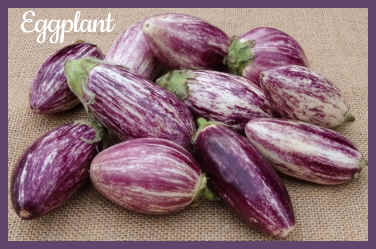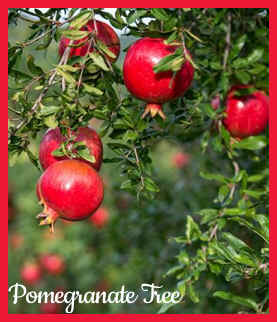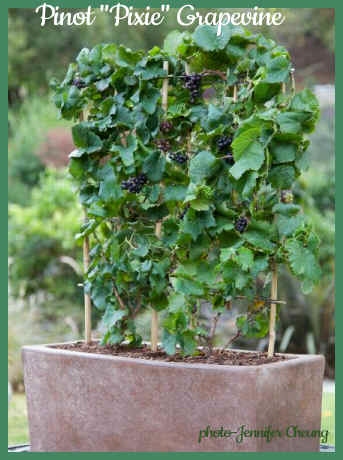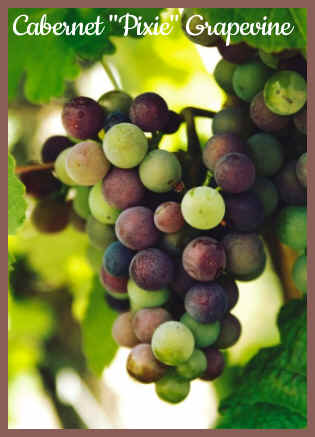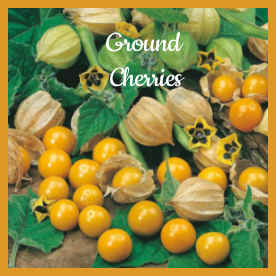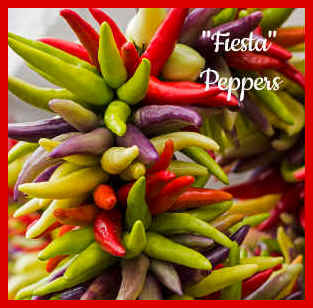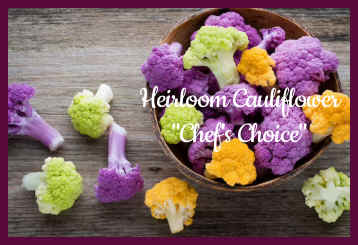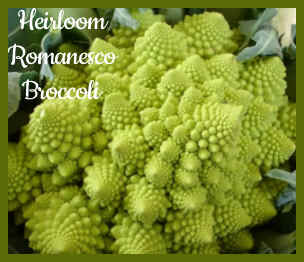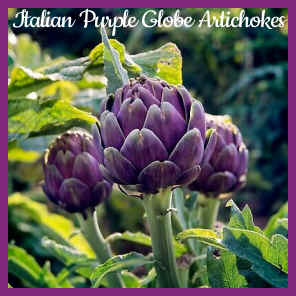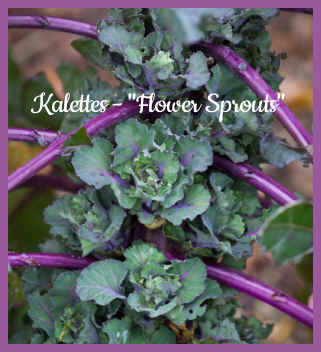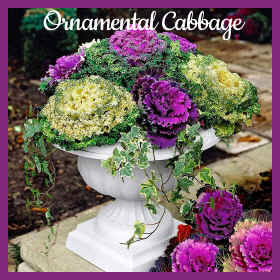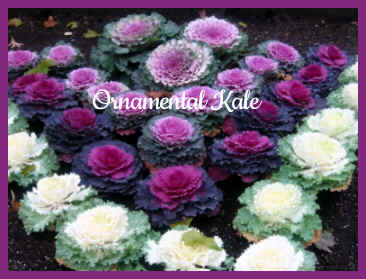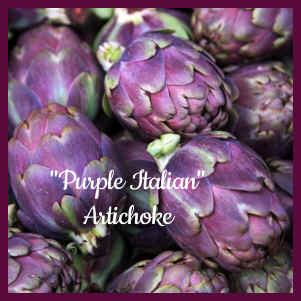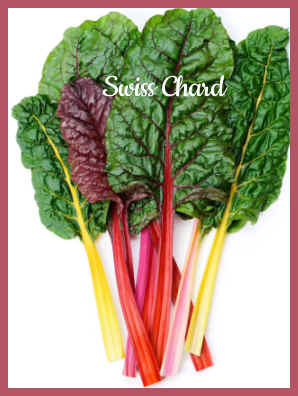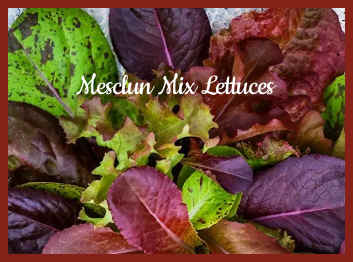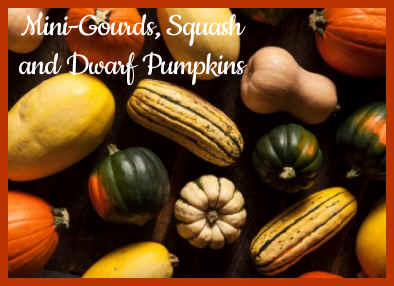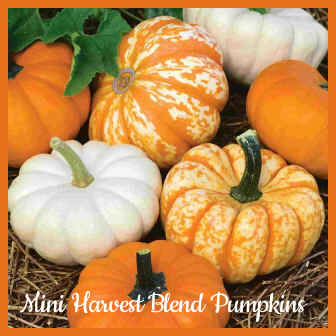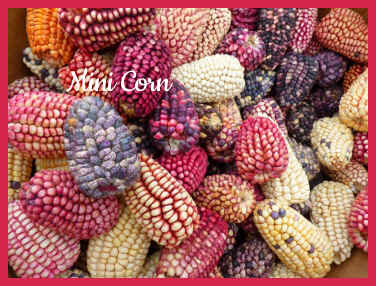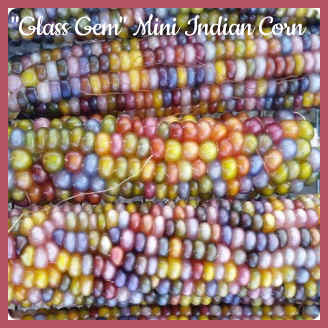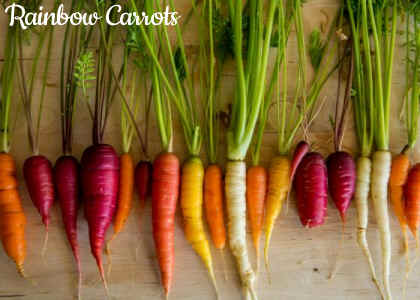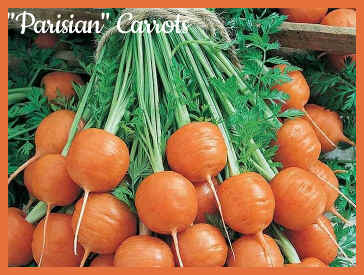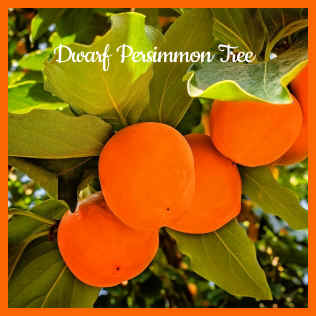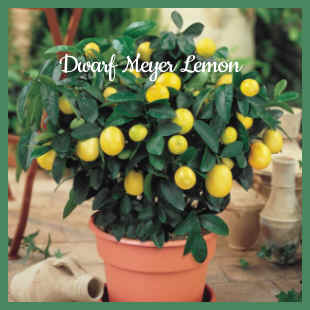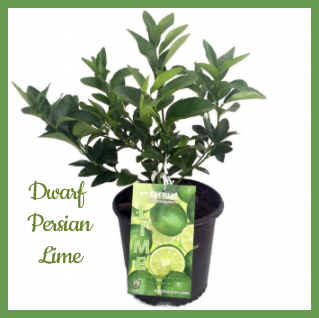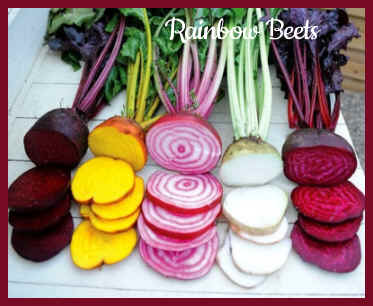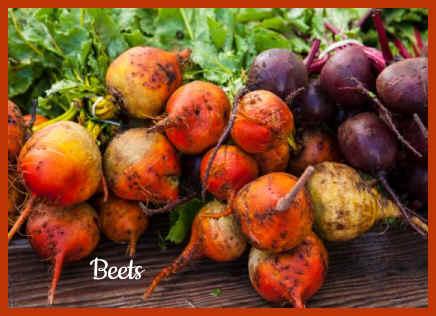|
Grow An Autumn Ornamental
and Edible Garden For The Best Rainbow Cornucopia Ever
Berries, decorative fruits and veggies, colorful foliage
and twigs
Decorate your garden, kitchen and dinners with colorful berries and
veggies.
The best time to design
your fall garden is in spring.
Grow potted and trellised vines and plants vertically to make use of limited and
"dead" space above and below plants and along fences. Indian Corn is
beautiful when grown against a black or white fence. Use a tall, colorful shrub
or dwarf tree in a pretty pot as a focal point, or a pergola, arch or ornate
trellis or gate. Use bamboo or metal teepees. Brussels sprouts look great
growing inside tomato cages, or staked in pots. Brussels sprouts will be the
last veggie you harvest before winter. Choose an awesome purple type.
I would design this space as part of a larger garden design in
the landscape. It partners perfectly with the Autumn
Colors and Homegrown Autumn
Decorations Designs, and flows naturally into the Winter Garden
Design. It can fill in color/blooming gaps in the rest of your landscape,
while you're waiting for this Autumn garden to do it's beautiful thing
with the rest of your landscape's fall foliage.
Add a birdbath and a rustic solar fountain.
Use the colors in a sunset, along with bold purples, and
bright autumn colors in choosing plants for planting in-ground, and in pots and
containers. Don't neglect plants for hanging planters full of color if you
have a structure to hang them from.
Accessorize with farm bushel and
quart berry baskets, watering
cans and new or old galvanized pails (oval galvanized tubs are beautiful as a
small planting bed or as part of a group of shapes around the garden). Place these
singly, if they're large, or in groups of several sizes. I have large ovals
tiered on cinderblock. Use vintage farm and gardening tools and utensils.
Vintage white enamelware, graniteware, old rakes and shovels. I have several
large red and green vintage tiller/cultivator wheels hanging on my fences (these
are quite heavy, so I don't move them much).
Don't forget the ornamental
value of an old rake, cultivator wheels, or a pitchfork. Plant something colorful in an
old trough or wheelbarrow. Old wire metal egg baskets are nice for plants or
picked gourds. Fill the bushel baskets with Indian corn and gourds chosen for your
decor and for harvesting. If you have room for a small vintage farmhouse enamelware table
with sides that extend, or find some galvanized old troughs and pails, they
would be awesome for designing a changing farm harvest
scenario those vintage implements, baskets and accessories. Almost all vintage
farm and farmhouse utensils and accessories are weatherproof and sturdy. Rusty items and pieces without
their handles still look at home in this type of garden.
Grow both edibles and plants that are purely ornamental. The
Thanksgiving turkey platter lined with purple kale and kalettes, rainbow carrots, purple
potatoes, cranberries, rutabaga, dwarf Indian corn, Swiss chard, or just mini
gourds and pumpkins are perfect as a bed for that big fat turkey - it's a thing
of beauty. Fill a vintage basket or cornucopia with grapes, blueberries,
crabapples, lemons and limes, dwarf oranges, etc. would be a memorable and
photo-worthy part of your holiday and autumn table setting. Foliage is also
interesting - some fruits and veggies have ferny or feathery leaves and look
very pretty when you leave them right on the picked veggie and lay them on your
serving platters.
The best leaves are from fig trees and grapevines, and they can also be used to
wrap your appetizers. Carrot tops are ferny and can be used as a base for your
relishes, appetizers, and desserts. Cooked or not, there are a lot of leafy
crops and edible plants that are valuable as ornamentals.
Use colorful root crops and dwarf vining veggies and herbs as ground covers,
grown on tall trellises, or rambling on fences. And grow as many as possible in
pots for a moveable garden to satisfy your desire to decorate and rearrange the
garden.
Choose as many diferent perennial plants as possible, to create a fall harvest
mini orchard, veggie patch, and a permanent bountiful cornucopia of awesome fall
colors and shapes. Choose heirloom and late varieties as seedlings, or grow from
seed. Harvest and save heirloom seeds in fall for true-to-type crops each year.
There are many colorful plant varieties available, and they have more vitamins
and antioxidants than the Plain Jane types. More colors means more vitamins and
nutrients.
You can design your garden in a patchwork quilt pattern, using
the most colorful leafy greens and veggies in the squares. Or make it an easy
square-foot garden placed in the middle of a larger design that includes teepees
of vining plants, big pots, and trellises. There are pre-made square foot garden
raised beds that have the squares already laid out. Paint the frame of the
garden beds with waterproof and food-safe exterior paint in a color that matches
the color of your brightest squares. Leave pathways between the garden beds
so that you can easily tend and harvest the garden.
Let's Start With The
Food.....Colorful and Unusual Edible Veggie and fruit plants
that produce in fall
To Go Right To
Ornamental Shrubs, Trees, and Plants, click
here.
Dwarf,
self-fertile Fig Trees In Pots
Most varieties have a small crop of luscious fruits in early spring and
another larger crop in late fall. The fig leaves have personality. Most turn a
bright yellow before falling. Check your zone for winter hardiness. I grow them
in big pots and store the non-hardy varieties indoors once they achieve
dormancy. Figs can come in yellow, bright green, purple. Fig trees don't get
flowers - the figs are the flowers. I have 6 or 7 dwarfs (mature
at 6-10 ft. if left unpruned) in pots, and each one has produced well, even
through this year's heatwave. They're not demanding, love the sun and a good
drink their first year in your garden. There are several self-fertile dwarf
varieties. Choose one or two for your harvest garden. Fig trees can be pruned to
stay short, and are gorgeous as espaliered trees,
freestanding or along a fence.
Choose one of the cold hardy
varieties if you live in northern states, or choose any one you like if you will
be wintering them in a sheltered place or indoors once they go dormant. My favorite is
" Kadota" - a self-fertile
dwarf that grows it's branches in interesting zen shapes. I also grow Brown
Turkey, Celeste and Hardy Chicago fig varieties in pots. The fig leaves
are also interesting, and can be used to wrap foods and appetizer
"packages", like you would with grape leaves. You rarely see a
recipe using fig leaves, but they are edible. They taste something
like fig and coconut. You can always just wear them as a loincloth. They
cover a multitude of sins. I once used fig leaves as part of a Greenlady
costume headdress. Why not.... I used grape leaves pinned to a headband
as part of a cluster of purple grapes costume.
Visit this page
to learn about dwarf fig trees and their care.
Eggplants
Grow smaller varieties staked in pots - Skip the common Globe Eggplant. Go
for thin, purple Chinese eggplant and some pink and white beauties. They ripen
in August, September (even into October), depending
on where you live and the variety you planted. Try "Rosa Bianca" and
other ornamental eggplants. They also come in a pink blush, and scarlet.
Eggplant comes in different shapes, from globes to long fingers.
Pomegranates are in season from the
end of September through November. When I was a child, nothing said "Fall
Is Here" like the arrival of those juicy, fascinating fruits piled high on
the Brooklyn, NY pushcarts. Spitting out the pits after we removed the pulp, and
seeing who could do it the farthest, was the only time we were allowed to spit
without reaping unpleasant consequences. My brother and I were each given one to eat on our
walk home from the fruit stands, and we made an awful mess on our clothes and
hands. That red juice stain was just about permanent. Grow a pretty dwarf
variety in an ornamental pot. They are long-lived, and can grow indoors and
outdoors. These are always beautiful in fall and holiday arrangements and
decorations. I've made fabric and wood dyes with the juice of a fresh
pomegranate. A decorative vintage wooden or wire basket looks great when it's
filled with poms and lemons. We all know the health magic of this superfood.
Dwarf Grapevines
Because they reach
only 18"-24" in height and produce smaller clusters, they are easy to
cultivate. The vines are small, the fruit is full size.
Pixie® Grapes are natural dwarf grapes — not genetically modified or
genetically engineered. Grow outdoors, or in containers indoors.
A trellis
helps to keep them upright under the weight of fruit clusters. These vines will produce
grapes all season long. I envision them on patios and balconies, and in pots in
the Autumn garden. I also envision them in my indoor garden. I never grew grapes
before because they take up too much room in my garden space. You can find them
in dwarf Pinot and Cabernet varieties. I would imagine there's a variety
out there for me that's great for making jams. The small vines would look lovely
in pots growing alongside my Clematis, along my white fence, and sitting on the
patio with dwarf fig trees.
Ground Cherries
These are not actually cherries. Also known as dwarf cape gooseberry,
and strawberry tomato, this plant produces a small, yellow, edible berry
surrounded by a papery husk. Ground cherries typically produce hundreds of
fruits on each plant. They are a cousin of the tomatillo. Typically, they bear
fruit from July until frost. The fruits must be fully ripe to be edible. At
maturity, the husks of fruits become dry and papery, and the fruits drop from
the plants. Mature fruits should be collected from the ground after they have
fallen. The husk is inedible and must be removed.
Use ground cherries for jams and pies.
Their distinctive, sweet-tart taste lends itself to preserves, sauces, and fruit
tarts.
Very ornamental. in the garden. Grow them in pretty pots because ground cherries
will often send up volunteer plants in the garden. Actually making them a
perennial that you plant once. But not necessarily ending up where you wanted to
plant them.
Ornamental peppers
Red, yellow, orange, black or purple peppers, whether hot or sweet, are the
most nutritious, A small ornamental pepper called "Fiesta" is quite
pretty and delicious. Black Cobra and Black Pearl peppers are spicy. The most
ornamental are the mini red, yellow and orange frying and salad peppers with
long shapes. These can be attached to wire, raffia or twine and hung while they
dry. Colorful potted pepper plants make very pretty accents in the garden and on
the patio. Ripe ground cherries have a long shelf life and can be held for
several weeks, for both eating, decorating and seed-saving.
Colorful Heirloom Cauliflower
Choose from, orange, purple and a very bright green. These add a wow factor
to a veggie and dip tray or serving bowl of mashed. As with other colorful
veggies, they bring an increased vitamin and antioxidant content to your diet.
"Chef's Choice" is an heirloom seed mix in a variety of colors.
Heirloom Romanesco Broccoli
Stunning shapes in your veggie garden, it has intense, bright green heads and
florets in artful fractal shapes. Very Sci-fi on a plate.
Ornamental Cabbage
and Ornamental Kale
-Cabbage
A decorating, ornamental garden and cornucopia statement, but not
much joy as a food. The ornamental cabbage seed mixes have been
hybridized to have purple and creamy white colors alongside beautiful
rich hues of green. While you could eat ornamental cabbage, it has
obviously been bred for looks and not taste. These beautiful plants
deserve a special spot in the garden, and can be grown within flower
groups, in rows, in clusters and in p0ts. They make a nice fall
foundation planting, and plantings at the bases of potted trees.
Stunning when grown with similarly-shaped and colored ornamental kales.
You can use your imagination and grow borders and beds in several places
in your food or ornamental plant gardens. Combine with dwarf,
purple-color ornamental grasses and ivies in a design, in galvanized
tubs, or in large hanging baskets.
-Ornamental Kale, or salad savoy, comes in green, white, or purple,
with growth forming a loose head. This variety is used in landscaping
and is edible, with a mellower flavor and more tender leaves than curly
kale, and way better tasting than the tasteless ornamental cabbage. It
also comes in a variety of colors. The ornamental cabbages and kales
make a stunning and colorful garden display all by themselves.
-Kalettes - (Kale-ettes)
"Flower Sprouts"
Developed in Great Britain, where they are called "Flower
Sprouts", this vegetable is a hybrid cross between Brussels sprouts and
kale. They resemble miniature, ornamental kale rosettes with purple highlights
on dark green. Leafy buds growing in the leaf axils along the stem – just like
Brussels sprouts. Kalettes are the result of conventional breeding; both parents
belong to the Brassica oleracea species, which also includes cabbage,
cauliflower and broccoli. Kalettes have a texture like
kale, with the nutty flavor of a sprout.
Design Idea: For
an easy, tasty and ornamental garden bed design, add in a few perennial
tall Italian purple globe artichokes and "kalette" plants in
the centers of low growing cabbage and kale groupings as focal points,
and you've got a purply winner of a stunning fall purple garden bed
design. Check out this suggested planting.
Am I Right?
Radishes
"Crayon Colors" are little beauties in primary colors. The
'Easter Egg' mix has pastel shades of pink and purple. You can even grow black
radishes. Heirloom varieties of black radishes take more than twice as long to
grow than regular radishes and are spicier, with a crisp black skin and white
flesh. I prefer my radishes sweet and mild. I use them in colorful stir fries
and salads. They look very pretty in little bunches on relish trays. Colorful
radishes come in several sizes.
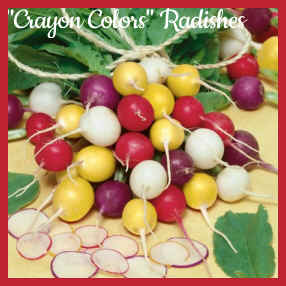 |
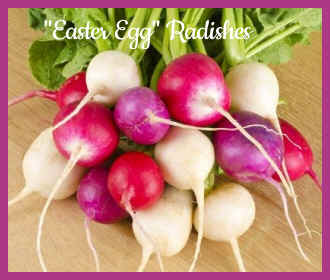 |
Heirloom Purple Globe Artichokes
Did you know that artichokes are actually a fruit?
Artichokes ripen from August through and into frost.
This plant is part of the thistle family.
They grow large, spiky, purple flowers. Stake them among tall, ornamental
flowers in purples, whites and pinks for a lot of garden "wow".
Perfect if paired with pink Hardy Giant Hibiscus.
Globe artichokes are perennial crops. They'll show up every year in your
cornucopia garden. "Petite Mercury" and "Baby Anzio" are
smaller varieties. Heirloom Purple Italian is an open-pollinated variety from
Italy that produces large, purple-headed fruits. More tolerant to temperature
extremes, Purple Italian Globes are more tender than the typical
green varieties. Open pollinated means that vegetables are pollinated in the
field by wind or natural pollinators to self- or cross-pollinate. Heirlooms are
generally open pollinated plant varieties that are more 50 years old.
Adirondack Blue Potatoes
Available in purple skin and flesh, Blue skin/ blue flesh, red skin/
red flesh, tan skin/ yellow flesh, red skin/ white flesh and in vivid
bluish-purple hues. They taste like regular potatoes, and they look
stunning mashed. There are many varieties of purple and blue potatoes,
including some with a marbled blue and white interior, Red Cloud, Rose Gold and
Purple Viking are a few colorful varieties to choose from. Grow in potato grow
bags for easy care and harvesting. These look great in vintage pails and bushel
baskets as garden decor. Awesome on your table if you use the colors in
different bowls, or layered and displayed in glass baking dishes.
 |
Sweet Potatoes and Yams
A traditional Thanksgiving feast side dish and pie. Tubers come in colors
other than dark orange. Tan, rose, red, orange or blue skin sweet potatoes are
available,, and the flesh comes in white, yellow, orange, cream or blue. All are
highly nutritious. Display a few in the garden, as they are picked. They will
keep well for a while in the outdoor chill.
"Rainbow Mix" or "Bright Lights" Swiss
Chard
Also called silverbeet, swiss chard is a delicious green that comes in lots
of colors. You can grow these stems in yellow, orange, pink, purple and maroon.
Leaf lettuces, Mesclun Mix, Romaines
Most lettuces can be sown in a two week succession, and you will have leaves
to pick in fall.
Rogue d’Hiver is cold tolerant, and is a beautiful wine-colored lettuce.
Freckled Romaine has burgundy dots on green leaves.
My favorites have always been Mesclun Mixes and buttercrunches, and I grow them
for a weekly fall harvest. Spread seed every two weeks in late august for a
weeks-long supply, cover with just a minimal amount of soil, pat down, water in.
In a few weeks, you'll be plucking fresh lettuce leaves for your daily salad. I
plant closely by scattering the tiny seeds in a raised garden bed, and I pick
leaves once they're about 3 inches long. If you leave the root in the soil, you
shall reap more leaves.
Growing in an elevated raised bed keeps slugs and other
disgusting things away from the lettuce, weeds aren't a problem, and it's easy
to harvest and eat immediately. You can easily follow this same process indoors
in rectangular windowsill planters. I am eating way more salads when I grow my
own leafy greens. And they're what I call pre-cut salads. The leaves are just
the right size.... I don't have to chop
or rip up any heads, because I intentionally sow my salad lea lettuces closely
and pick young leaves often. Leaves will keep growing after you trim leaves
until a hard frost. Be sure to leave the roots when you pick.
Mini Winter Squash and Mini-Pumpkins
So many varieties and colors. Stop buying them every year from the
supermarket. These are a great addition to your
colorful autumn cornucopia garden. Grow these in the Native American Three Sisters
way with Indian Corn and squash. It saves space and looks beautiful. You can also grow these
over a pergola or arch. I wonder how a baby pumpkin pie would taste? I would
prefer to use the minis, rather than cutting and cleaning out the giant pumpkins
for my fresh pies and pumpkin bread.
Park Seed offers a mix called "Mini Harvest Blend Pumpkin", shown
below. Get mini pumpkin and other gourd seed mixes, and grow a patch, or grow
them climbing on fences, railings, trellises and in bamboo teepee plant stakes
with other pretty gourds. Edible and so darned cute as fall decorations. They
will last for months in a basket when dried.
Grow and dry some
long-neck gourd varieties to create pretty, painted, hanging birdhouses
- I had several of these, and yes, the birds grew their families in
them. I watched them do it from the day they mated and feathered their
nest, until the fledglings left.
Mini Indian Corn
- Ornamental and Edible Types
There are 16 colors of corn to choose from. Corn is an essential part of a
Three Sisters Garden Planting. Trellis or teepee these plants
because they can reach 10
ft. We all love to decorate with Indian Corn. Ornamental "Glass Gem"
Corn is edible, and it makes firm little morsels
when popped. It can also be parched and ground into meal. It makes an
awesome and colorful centerpiece as part of a cornucopia, or strung in bunches
and hung on doors and archways. The colorful kernels look translucent, like
glass. There is a sweet red corn available to
gardeners. Flour-making types of corn come in blue, green and orange. Use
the dried stalks for autumn decor, tied to railings, teepee stakes or
posts.
Carrots
Pick from orange, purple, white, yellow. Tie some in bunches for garden
decor.
Dwarf Fall Colors Fruit Trees in Pots
- Lots of fall color and bushels of fruit
Most dwarf non-hardy varieties can grow indoors as very pretty houseplants.
I grow dwarf Meyer lemon trees and Persian limes in big colorful planters all
summer, and I bring them in and grow
them indoors in our zone 6 winter, where they flower and fruit all the time. The
fragrant and pretty flowers are constant. I put them back into the garden in
their pots in spring.
Many potted dwarfs are
beautiful within an in-ground garden design, as a focal point, in empty corners
of the garden, decorating the two sides of arches and doorways, and of course,
hanging on the patio with you.
The Owari Mandarin Tree is a beautiful dwarf patio tree that can handle brief
temperature drops down to 12 to 15 degrees. They can be brought inside with
their other dwarf tree friends for winter in the coldest regions. These are the
hardiest dwarf orange, and look, taste and peel just like clementines. Many
colorful dwarf trees love the controlled growth, ease of care, and the mobility
that comes with living in pots.
Dwarf Meyer Lemon and Persian
Limes are self-fertile and grow to about 4-6 ft. They can be pruned back after
fruiting. These are not hardy, but make awesome winter houseguests. Meyer lemons
are not as acidic, are sweeter, and are better lemons for cooking than your
everyday grocery store type. Buy these trees at more mature sizes, like 2-4 ft.
and you'll have full-size fruits in no time. Mine flowered constantly indoors
and out, and fruited in their first year in pots as 2-3 ft. bare root trees
planted indoors in winter and brought out in spring.
Don't limit yourself to these
non-hardy types or just to citrus - there are many dwarf trees with colorful
fall fruits or foliage that are cold hardy. I've started a dwarf fruit tree mini
orchard, and grow fruit in several areas of my landscapes. I can't grow too many
indoors in winter, but I can grow plenty of these little beauties in my front
and backyard, as well as my patio. A great way to fill your cornucopias in fall.
Lemons and limes take months to fully ripen, so if these become houseplants with
fruits on them, there's your ornamental indoor decor bonus.
Beets
A beautiful ornamental plant and superfood. Beet varieties come in red,
white, gold, and some have strips, burgundy, candy pink, and also red varieties
with golden roots. ‘Bull’s Blood’ has bold and fiery red foliage.
Native
American 3 Sisters method for growing Indian corn, colorful edible or
ornamental beans and squash or gourds-->
Ornamental Shrubs, Trees
and Plants - Fall Foliage, Fruits and Berries
Many edible fruits that we call
berries, aren’t, and others that we consider fruits or vegetables
(like avocado), are berries.
Berry shrubs, trees and plants have great ornamental value, and
many will present you with fruit in summer, and possibly in fall.
Brightly-colored jars of
preserves and holiday ornaments will be your winter bonus.
Most berry plants and trees need a male and female to produce
berries. There are a few varieties that are self-fertile. Be cautious when
purchasing because not all nursery or home center folk know whereof they speak,
and you might end up with same sex plants that produce no berries. Labeled
varieties from growers are accurately sexed.
You can visit our Winter
Gardens Design page to view more ornamental berry and
colorful twig
plants
like Winterberry, etc., that begin their show in fall, decorate your
home for Thanksgiving, decorate your culinary presentations, and last all winter.
Choose types and varieties suitable for your planting zone -
check the USDA Cold Hardiness Zone map for perennial plants.
Non-hardy varieties for your zone have to be treated as annuals, or be brought
indoors for winter.
Edibles - Black Currants, Boysenberries; Elderberries, Gooseberries,
Huckleberries, Raspberries. cranberries (in time to preserve the Thanksgiving
holiday condiment).
My Raspberries are everbearing, so I have lots producing in fall.
My dwarf black lace elderberries have stunning purple/black foliage all year,
long-lasting pink blooms, and pretty purple/black berries in fall. This shrub in
all varieties is beautiful year-round, and it looks especially stunning
in Asian and Zen designs, paired with potted Dwarf Japanese Maples.
Blueberries - Grow
dwarfs in pots - spectacular bright
red fall leaves. Summer fruit for fall pies and preserves.
Quince
Quince is an autumn fruit. The quince plant is a large bush, as large as 10x10
ft. A ripe quince has a yellow skin with hints of green. Grow
one as a focal point in the center of the garden in a large, ornamental pot. It
can be pruned to a height and shape you like.
Berries - Ornamental
Shrubs
Beautyberry
I've grown these and they're gorgeous. Mine were pinks and lavenders. The birds
had a fall and Thanksgiving feast, and these are beautiful woven into loose-design
wreaths, garlands and candle rings.
Nandina "Firepower"
(Heavenly Bamboo)
I grow these pretty little evergreen ornamentals in pots. Firepower is a dwarf
variety of Nandina that can fit in anywhere. The leaves are reminiscent of
bamboo, delicate and airy, and these are gorgeous all year, in shades of reds,
yellows and orange. It grows nicely into a mounded shape and looks stunning as a
small hedge, as well as in pots as accents throughout the garden. The berries
are a very pretty and bright orange, hanging in nice clusters. It needs no
pruning, unless you want to snip some longer ends off. Nandina is self-fertile.
They deserve a spot in the autumn color garden and in Asian Garden Designs.
Ornamental - Bittersweet
Probably the most popular vine berries used by decorators and wreath-makers in
fall and winter. Bittersweet is a strong, woody vine. Choose a native variety
like C. scandens, because others can be quite invasive and stubborn. I
grew 2 in very large pots with a small arch, poked an end into each p0ot as
support, and kept it growing the way I wanted it to. These plants look stunning
when planted in the giant-size black pots on either side of anything. Trust me,
the colors will knock you over.
Bittersweet's orange berries on dark green foliage is quite
beautiful in Autumn. Grow on an arch or obelisk, pergola or tall trellises. But
grow them in pots. They're very pretty growing over any ugly fence or cement
wall, but you need to plant them in pots and not in the ground, or you will be
very sorry when you have to prune, remove suckers, tie or control them some way.
You'll need at least two to tango with these.... you'll need male and female
plants to get berries. For all the trouble, these vines are gorgeous and we
spend a lot of money buying decor that includes them. They're worth it, and the
birds in the garden will be your friends forever.. A garland or wreath woven of
Bittersweet, and evergreens, ivy or grapevines is a sight to see.
Ornamental
- Ilex (Winterberry)- Ilex
verticillata
Gorgeous in the fall-winter garden and in arrangements. Read
more about ornamental Winterberry here-->
Those leafless, berry-clustered stems you see florists and wreath-makers use are
made from this. You will need a male and female plant for pollinating and
creating those berries. Choose a dwarf cultivar like "Red Sprite" and
others. Groupings of 3-5 of these shrubs is breathtaking in the fall and
winter landscape. Cut branches can be used for many decorative projects. Birds
enjoy the berries, as well.
Ornamental - Spicebush
Spicebush is a native plant that grows gracefully along edges of woodlands and
other part-shade areas with a beautiful color. Birds love the berries. Tight
clusters of chartreuse blossoms in spring. The berries start to redden by late
August in the Mid-Atlantic zone, and the leaves turn a bright yellow in fall.
Spicebush requires a male/female to berry up. Edible as an ingredient in
culinary creations, most often as dry rubs.
Ornamental - Viburnum
Many varieties to choose from.
American cranberry bush viburnum is a native shrub with reddish orange leaves.
This plant is featured in the Autumn Decor
Garden design on this page.
Viburnum is a large shrub, and its berries come in different colors.
‘Brandywine' is my favorite. The leaves have a pink tinge, and the berries are
a pink-purple. It's hard to find pretty purply-pinks in fall landscapes.
Viburnum is self-fertile, so you can plant only one and get beautiful berries..
Now that I've filled
your head with a lot of ideas, you can get planting in spring, in time
for this Autumn Cornucopia Garden to grow and take your breath away. You
can order the veggie seeds during the dreary winter, and begin little
seedlings on windowsills or under grow lights, to be placed in the
garden when the threat of frost is past.
Purchase quart or
gallon sizes of ornamental shrubs and trees, or 3-4 ft. sizes of dwarf
trees in spring to avoid having to baby infant plants, and to allow them
a good head start for fall blooming and berry production. Plant
pollinator plants around the garden to attract and entice them into
pollinating your fruit and berry plants and trees. Especially the plants
that are not self-fertile. It won't hurt to plant some pretty Agastache
(hummingbird mint). It comes in yellow and orange fall colors and blooms
a long time, so it will look great in the Autumn garden. It won't hurt
to feed and view the hummingbirds that visit it, and the garden all
summer. Besides, the mint or licorice scent and flavor of the Agastache
leaves can be harvested and dried for culinary purposes.
Grow Your Autumn
Decor Garden Autumn
Colors Ornamental Garden
Article and Garden Design: ©2021 Mary Hyland,
marysbloomers.com
All rights reserved.
Additional Resources
USDA Seasonal Produce Guide
Burpee Seeds
Eden Brothers Seeds
Ferry-Morse Seeds
Park Seed
Seedsavers.org
|
Content, graphics,
photos and design ©2020 marysbloomers.com™
All rights reserved.
|
|
